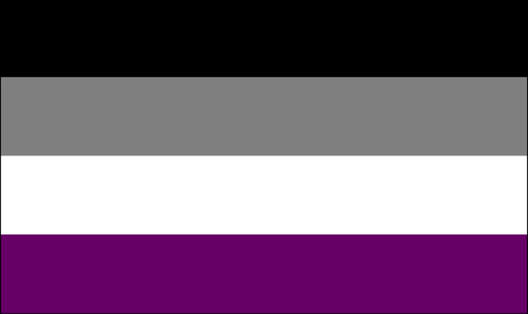Asexual Manifesto
Ariel F. Hitz, Calisto M. e Ravi D. Pires

We decided to write this manifesto, although there is a previous one, because we feel that “The Asexual Manifesto”, written by Lisa Orlando in 1972, does not represent the current asexual community.
For a long time, society has been creating lies about asexuality. The truth is that we are not ill, neither do we need a cure nor an ideal partner. This orientation is also not a “post-modern” creation or celibacy, which is just a choice, while asexuality does not depend on the individual's will or status quo of their sexual life.
What we need is to be listened to.
Asexuality
Asexuality is simply the orientation which one rarely, conditionally or never experiences sexual attraction.
It has been present in humanity since its beginning, just like all the other sexual orientations.
And more than a single orientation, asexuality is a large and vast spectrum, that contemplates several asexual experiences, from the strict to the gray area, among a diverse group from people of all genders, cultures, races, ethnicities, classes and any other social division.
These are experiences that can involve romantic relationships and physical contact, like kisses, that doesn’t depend on our disposition or indisposition to the sexual act, or even masturbation and sex, what doesn’t annul our asexuality.
It is important to highlight that the asexual spectrum is separated from the aromantic spectrum, because, even though our communities overlap sometimes, the experiences are different, therefore, not all asexual individuals are aromantic and vice versa.
Not experiencing sexual attraction does not necessarily imply not experiencing romantic or physical attractions.
Considering that some people in the asexual spectrum can still experience sexual attraction rarely or under limited conditions, and that asexuality by itself does not indicate sexual or romantic attraction towards specific genders, we acknowledge that an asexual individual can have a parallel gender-guided sexual orientation and/or a parallel gender-guided romantic orientation. This orientation describes to who they are sexually or romantically attracted to on these occasions.
That way, an asexual person can also be straight, lesbian, gay, bisexual, pansexual or any other sexual and/or romantic orientation attached to their asexuality.
Community
The asexual community is organized and expressed in different ways than the others, that way is important to not apply allosexual views to this community.
The internet being present and important to our organization as a community does not make us less valid or real, as well as our experience is not a non-queers’ excuse to infiltrate the LGBTQIAP+ community.
Asexuality is, just like all other sexual orientations, an expression of our identity, an intrinsic characteristic to the asexual individual and, also as all other sexual orientations, have its own attributes, symbols and peculiarities.
Our experience, although not unique, is directly linked to asexuality and its manifestations, which, whether known or not, doesn’t make us less of a community or prevent the queer community as a whole from being taken seriously.
Again, we ask: listen to us and do not limit our experiences to the views and terms of other communities, as we have our own ways of defining and expressing ourselves.
Asexual Manifesto
Ariel F. Hitz, Calisto M. e Ravi D. Pires

More info: aroaceiros